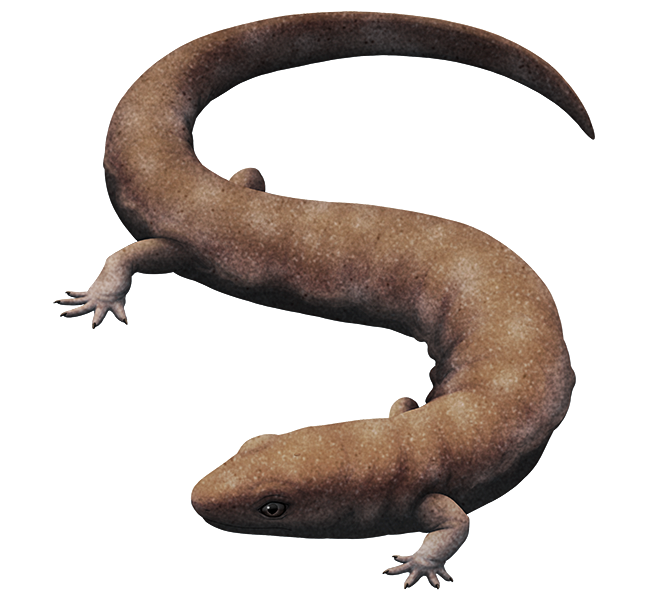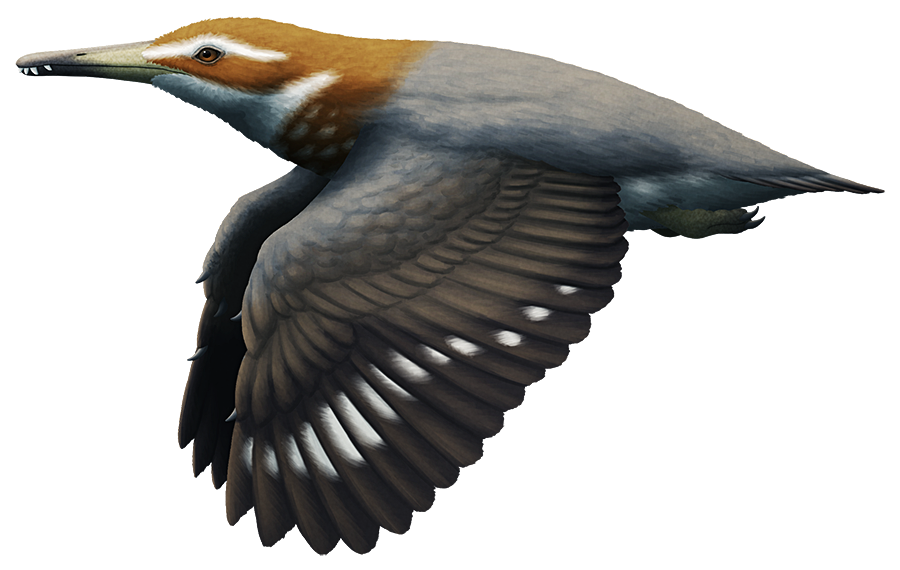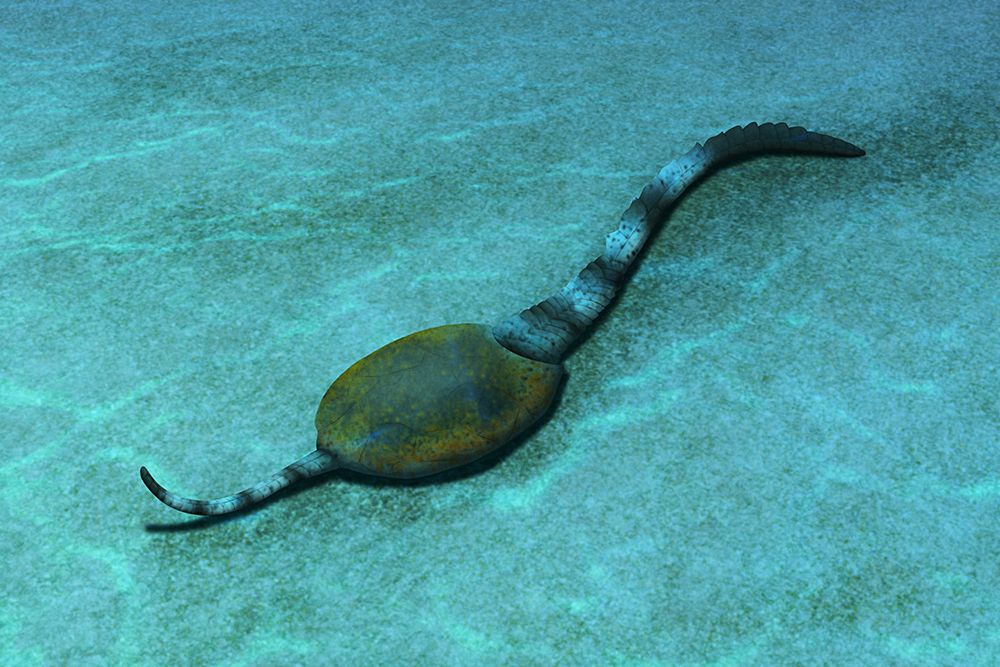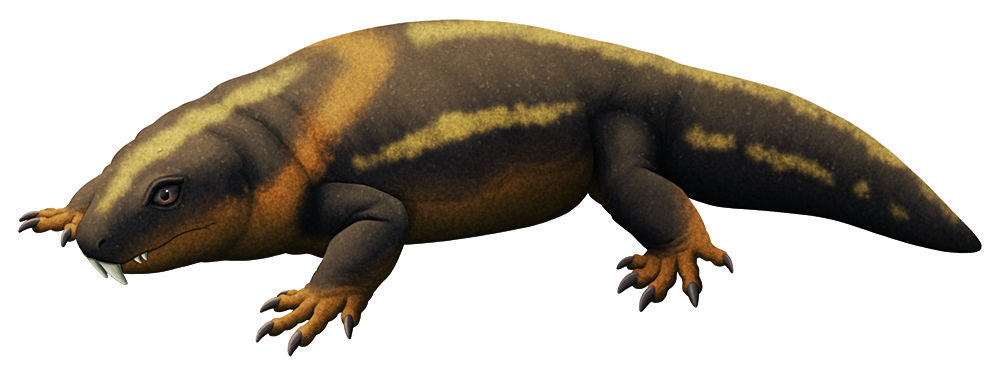Westlothiana lizziae from the Early Carboniferous of Scotland (~338 mya).
About 20cm in length (8″), this superficially lizard-like creature (nicknamed “Lizzie” by its discoverer) had a long slender body with relatively small legs, which may have been adaptations for burrowing similar to modern skinks.
Its anatomy shows a mixture of both amphibian and reptilian characteristics, suggesting it may have been a close relative of the first true amniotes. But exactly where it fits in that area of the evolutionary tree is still uncertain, with different paleontologists classifying it as either an early amniote, a reptilomorph, or a lepospondyl.





